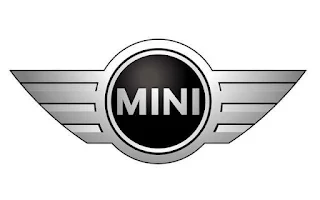Mini Cooper is the product of a decidedly non-British company. In this case, the company is BMW, which developed the car as a joint project with England's Rover Group, which it owned from 1994 to 2000. Introduced in 2001 as a 2002 model, the new Mini Cooper borrowed the original's nameplate, distinctive appearance, and--most importantly--its sporting spirit. Although the need to conform to contemporary safety standards, and to include modern amenities, have made the Mini considerably larger and heavier than the pocket-sized original, it is still one of the smallest four-passenger cars on the market. It is also still built in England.
The original Mini was a line of iconic British small cars manufactured by the British Motor Corporation from 1959 until 2000. Its models included the Morris Mini-Minor and the Austin Seven, the Countryman, Moke, 1275GT and Clubman. Performance versions of these models used the name Cooper, due to a partnership with racing legend John Cooper. The original two-door Mini continued in production until 2000. Development of a successor began in 1995 and the new generation car was launched in 2001. The current Mini range includes the Hardtop/Hatch/Convertible (three-door hatchback), Clubman (estate), Countryman (five-door crossover), Coupe/Roadster and Paceman (three-door crossover based on the Countryman).
Like untold millions of other small cars produced over the last half century, today's Mini Cooper derives its configuration from the original English Mini, as introduced in 1959 and produced through 2000. Like its nominal predecessor, the current Mini is a subcompact two-door whose corner-mounted wheels (for minimal body overhang) and transverse-mounted engine allow for a considerably roomier passenger compartment than might be expected in a car so small.
The first-generation Mini (Mk. I) was produced in hard top form through 2006. In 2005 a convertible was added to the line. Changing safety requirements prompted the development of a considerably revised second-generation Mini (Mk. II), which was introduced for the 2007 model year. While a casual observer might not notice any difference at all, the Mk II has all-new body panels. The same year saw the introduction of the Clubman. With 9.5 inches of extra length, the Clubman has more room in the back seat and luggage compartment, and a pair of rear-hinged mini doors to ease rear passenger access. The Mini convertible continued to be based on the Mk. I platform through the 2008 model year. A Mk. II convertible was introduced as a 2009 model.
The Mini is sold throughout the world, with a variety of engines intended to meet the needs of the local markets. Those engines were initially designed and/or produced by other companies. The gasoline versions were designed by Chrysler and built in Brazil, while the diesel engine was purchased from Toyota. The Mk. II's engines were developed in a joint venture with PSA Peugeot Citroen, and are built in England.
Even the most sporting Mini--the Cooper S--delivers respectable mileage, at 34 MPG on the highway, while the less powerful models are even more frugal. Beyond that, Mini is expecting to deliver 500 examples of he all-electric zero-emissions Mini E for a proof-of-concept field trial in 2009.
Mini Cooper Car Manufacturers
Introduced in 2001 as a 2002 model, the new Mini Cooper borrowed the original's nameplate, distinctive appearance, and--most importantly--its sporting spirit.

